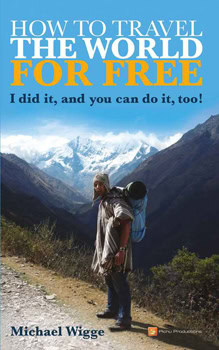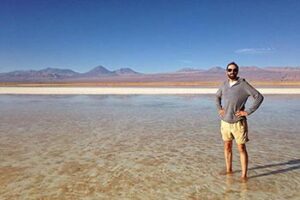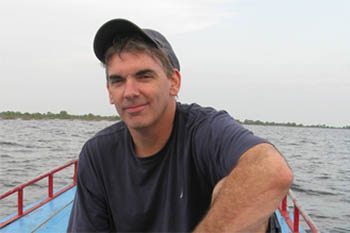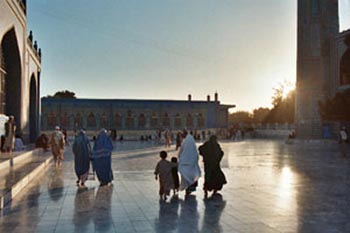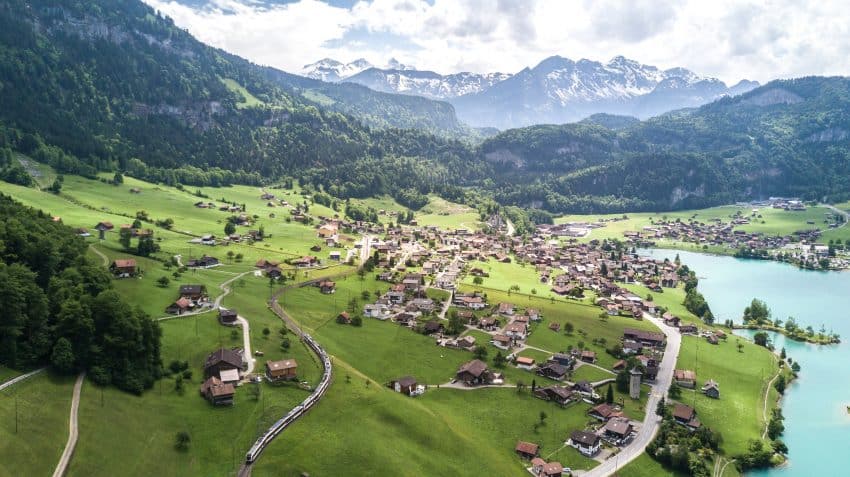
Michael Wigge Shares His Secrets
Traveling the world may seem like an exciting but expensive idea. But what if it could be done for free? Michael Wigge did just that. Casting away the norms of conventional travel, he set out on his trip from his native Germany without a cent to his name in hopes of reaching Antarctica.
Prompting strangers into a pillow fight in San Francisco, becoming the “human sofa”, and butler for a day, Wigge engaged in numerous alternative means of work. His two rules: 1. Avoid ordinary work and focus on uncommon services in exchange for trip essentials (a place to sleep, food, travel); and 2. Engage people. He found that if you let people in on your plans, they are more than willing to help make things happen.
Michael Wigge began his career as an anchor for the German VIVA program London Calling in 2002. Since then, the world has been his newsroom and playground, whether he is living with the native Yanomami Indian tribe in the Amazon rainforest, taking the longest recorded donkey ride in the history of music television, or fighting Sumo wrestlers in Japan.
Whether reporting from prison for MTV or entering Buckingham Palace solemnly attired as King Henry VIII, Wigge has always thrown himself into the most unusual of situations. He has served as a reporter, producer, and journalist for public and network television.
He says about his travels, “Everything is possible without money. I made my dream come true.”
Excerpt from How to Travel the World for Free
“With the 70 dollars I earned with Umit, I buy a bus ticket. The distance to Ushuaia is just 2,000 miles; the remaining money should suffice until then. I only have four days until the ship departs, but I want to visit Patagonia and Tierra del Fuego. I decided to take the risk: I will take the bus to El Calafate, which covers about 1,500 miles, and from then on I will hitchhike through Patagonia and Tierra del Fuego.
The next 30 hours on the bus basically consists of me sitting and sleeping. The food is included in the price of the ticket, which I hadn’t expected. We eventually reach El Calafate, a small mountain town which has been beautifully restored. It’s the closest town to the Perito Moreno Glacier, making it one of Patagonia’s favorite tourist destinations.
From here I need to hitchhike further. While just three days ago in Buenos Aires the weather was hot and humid at about 90 degrees Fahrenheit, here it is just 41 degrees Fahrenheit. El Calafate lies in the middle of the Andes Mountains so even in the spring (beginning of November) it is bitingly cold. Majestic snow-covered mountains, large brown, fields, and beautiful blue lakes surround me, but at the moment I couldn’t care less about the scenery.
My hands are freezing from holding up my cardboard sign at this temperature, so I hang the sign around my neck and put my hands in my pockets.
The sun is shining and in theory, the warmth from the sun is welcomed, but because I’m high up in the alpine countryside, due to the thinning ozone layer, UV rays are a concern. For this reason, almost every tourist guide warns you not to stay in the sun for too long. Unfortunately, I don’t have a choice; I have to find a ride.
A bus driver sees my sign and stops. He takes me along on the six-hour trip to Rio Grande in Tierra del Fuego. The bus is brand new and I’m being transferred to a hotel in the city. So not only am I the only passenger on the bus but the very first one as well. Upon arriving in Rio Grande, the first thing to do is look for an inexpensive hostel with the last of Umit’s earnings, which I find.
On to Ushuaia
The temperature is freezing outside. Despite my exhaustion, however, I can hardly sleep. The whole night, I keep thinking that if I am able to cover the last leg tomorrow to Ushuaia, which is just 135 miles away, I will be at the harbor two days before expected and will certainly be able to catch the ship.
Quite fatigued but full of adrenaline, I get up the next morning and start early with my sign to Ushuaia. Two hours pass before Marcello stops in his pick-up truck. He says the magic word’ “USHUAIA!!” We travel past the fields of fresh snow, quiet lakes nestled between mountains and fir trees along the road.
Marcello comes from Mendoza, a city in northwestern Argentina known for its vineyards and pleasant climate. Still, he ended up here in freezing Tierra del Fuego, about 1,800 miles south of his hometown, for work and for a higher salary. Tourism is partly the reason why there is more work in this city, but mostly it’s due to the large tax benefits the government offers in order to attract more companies. Tierra del Fuego is also Argentina’s center for electronic products.
Marcello has recently turned 40 years old and is financially doing well for himself. Although he misses his relatives and friends in Mendoza, he knows that he would never earn as much there as he would here. However, there are always sacrifices. “There may be money here, but not many single women,” he informs me, somewhat grimly.
Arriving in Ushuaia
It’s the 7th of November and I finally arrive in Ushuaia. I can hardly contain my happiness. Marcello is left in wonder when I get out of his truck, and calls out behind me, “Say hi to the ladies in the strip clubs for me!” At this moment, though, naked ladies are the last thing in my mind. Ushuaia has a population of 60,000, and winters here are extremely cold with temperatures down to -4 degrees Fahrenheit; even during the summertime, it only manages to get up to 50 degrees.
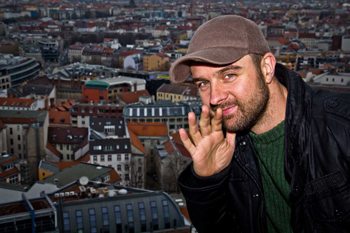
I see a lot of tourist in Ushuaia who are probably stuck on the idea of seeing the southernmost city in the world. On most of the street corners, what with Antarctica less than 700 miles away, I see many promotional signs reading: Fin del Mundo. That is, of course, “The End of the World.”
After some time I come to the office Antarctic Dream. In the office, Sabina, the employee with whom I have been exchanging e-mails, welcomes me. I can tell that she is surprised that I have actually made it here. She takes me to a company-owned holiday apartment where I can stay for the next two days. With still one day left before the departure, I make use of my time by visiting one of the highlight attractions.
Tourist Train
Near Ushuaia is a tourist train with the name El tren del fin del Mundo! (Train to the end of the world!) It’s an old steam engine pulling three wagons through the beautiful landscape of Tierra del Fuego. The price of the ticket is 20 dollars; since I don’t have this, I decided to sneak on board. An elderly couple sees me cowering below a seat hiding from the ticket agent. They smile and I know that they won’t blow my cover.
After ten minutes, I am given the all-clear signal: tickets will no longer be checked on the train. I sit up and enjoy the beautiful journey through the national park. While looking out of the window, it becomes clear to me how very near I am to the end of the world.
Buy this book on Amazon: How to Travel the World for FREE: I did it, and you can do it, too!

Hannah Monahan is a former editorial assistant at GoNOMAD and now lives outside of Boston, where she works in human services.
- Missouri Sports Travel Adventure: From Landmarks to Ballparks - January 21, 2026
- What First-Time Visitors Get Wrong About Visiting Iceland - January 15, 2026
- Bareboat Charter vs all-inclusive Crewed: Which Luxury Charter Fits You? - December 29, 2025

